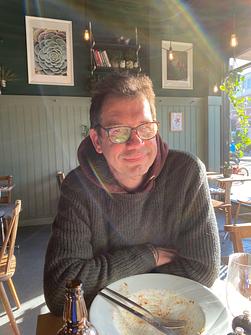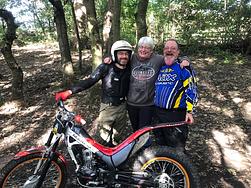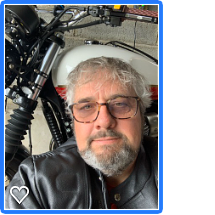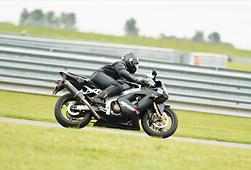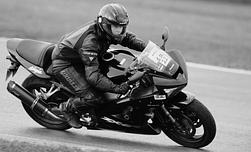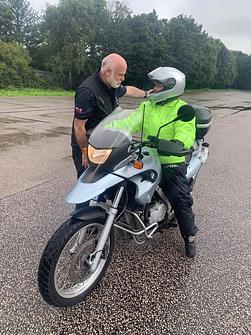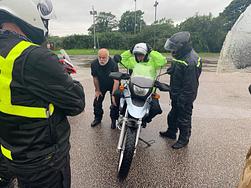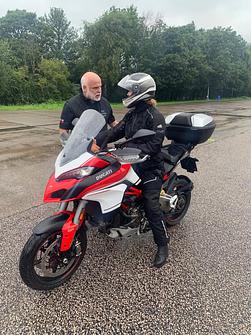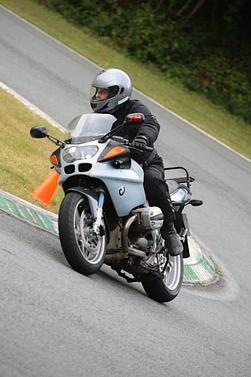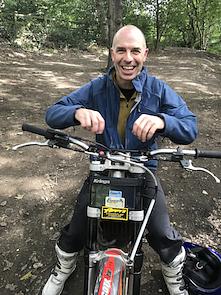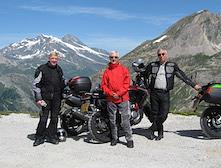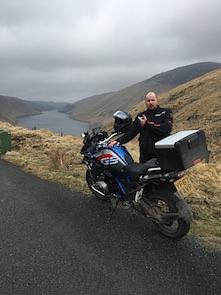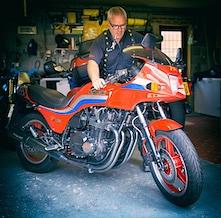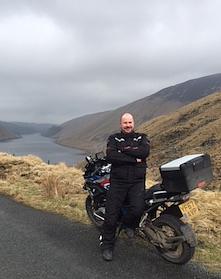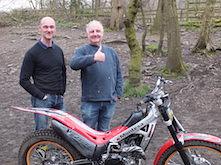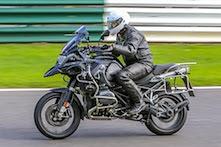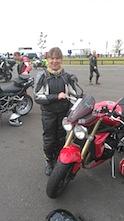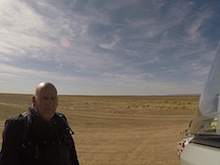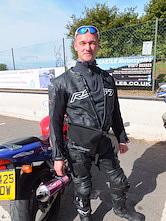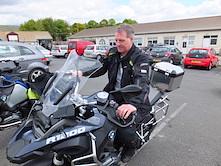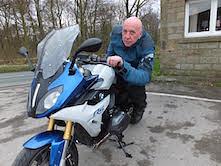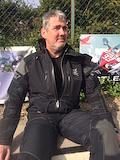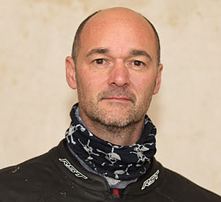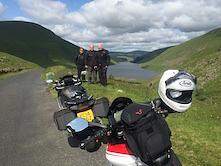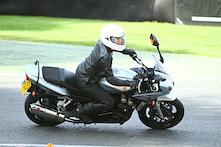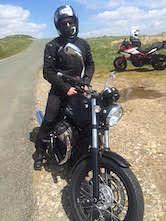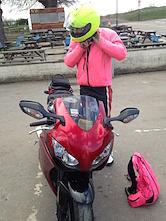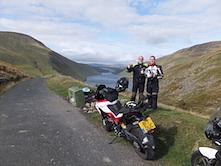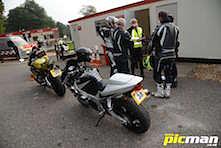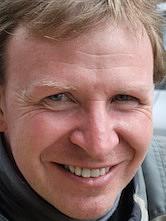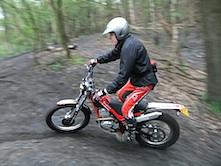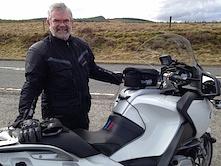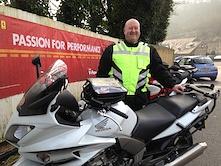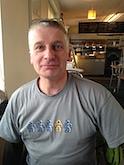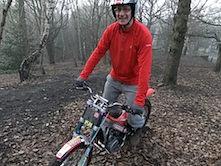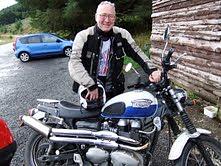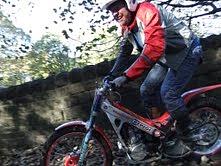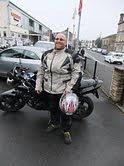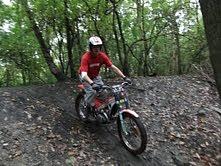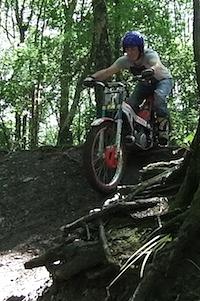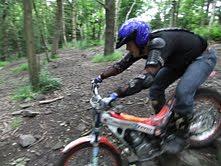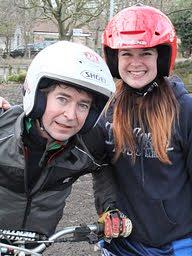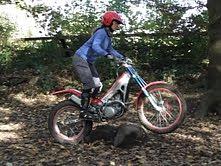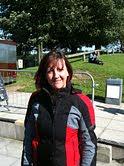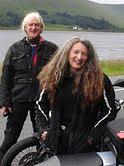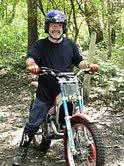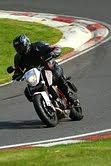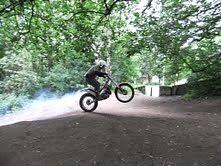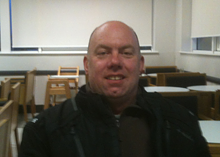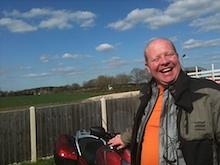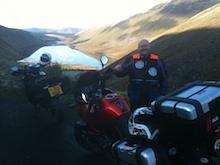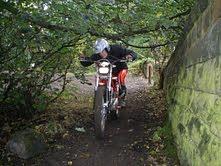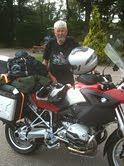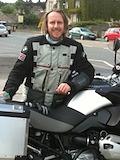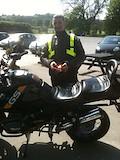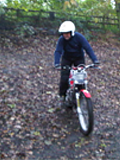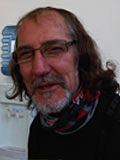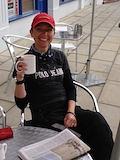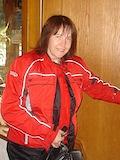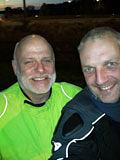Some detailed feedback from an experienced and quality rider who has experience of HRT's days @ Cadwell:-
"Hopp Rider Training,
We are all different. My personal ‘most fun’ motorcycling is riding enthusiastically at or close to
my limit with no-one coming the other way, no junctions, diesel slicks or tractors and the
chance to try to get a particular stretch of road ridden better than the last time only a couple of
minutes ago. I’d like to ride more like this on the road, but I realised many years ago that it
would be entirely inappropriate and dangerous. Hence RoadSmart, advanced training and
measured, thinking riding with large margins for safety.
I’ve always been a huge fan of motorcycle sport of any kind. As a youngster I’d ride to Brands
Hatch or Snetterton and wish that I could be out there racing. It was not to be. Having been
riding on the road for over 50 years I left it a bit late to get onto a circuit for the first time. This
first outing was at Cadwell Park in the Lincolnshire Wolds about 12 years ago. I did a
Lincolnshire Safety Partnership track based ‘Bikesafe’ that was staffed by the Hopp Rider team.
A morning of good skills training followed by an afternoon on track. I was riding a Honda
CB1000R (a naked bike not a Fireblade) and I ended up wishing I’d have done it a lot earlier. I
was also a bit quicker than a couple of real Fireblades
Since then, I’ve done a Hopp Rider Training Day on a Buell 1125 and a couple of times on my
R1200RS. I then decided to go for it in a more committed way before I get too old. I did a day on
my new Honda last year and this year I have done HRT days 3 times on my CBR600RR that I
have modified to make it more track focussed, although it is road legal. I also did 2 other, less
‘controlled’ track days at Cadwell Park that were more ‘interesting’ (totally different). Last year
I did an IAM Skills Day at Croft too. A lot of the trainers at Croft were the same people that work
on the HRT team.
I’d like to talk a little about Hopp days. The way they are run, the people who attend and the
benefits as I see it to road riders.
The Hopp Rider Training days are run at Cadwell Park. For those that don’t know the circuit it is
narrow, full of features and it is very hilly. Perhaps think of it as your favourite B road but with
no-one coming in the opposite direction, a great surface (grippier than ‘normal’ tarmac) and
plenty of runoff with marshals waving flags if anything has gone wrong ahead. So, it is a very
safe environment providing everyone behaves. This is where HRT days are a bit special.
To ride at a HRT day you need to have a full license, a road legal machine with mirrors,
indicators and a brake light. Your bike needs to pass a noise test. It would have to be very loud
to fail. All sorts of bikes turn up. Everything from cruisers, commuters, everyday bikes (GS’s) and
the latest sports bikes. Riders need to have proper riding kit including boots and gloves. Textiles
are fine but they, and 2-piece leathers must zip together. Flip front helmets are fine, and bikes
don’t need brake lever guards. HRT have special dispensation for these ‘allowances’, and for
good reason. The most capable riders aren’t always on the fastest bikes.
On most HRT days that I have attended there are no ‘crashes’. There is sometimes an excursion
onto the grass or two and that’s it. In 7 hours track time this is remarkable. If you attend a No
Limits event you may get lucky if you don’t see a red flag in every 20-minute session.
So how is it organised? There are two groups. A and B. Group A is for those who have ridden at
an HRT day before and feel that a faster group suits them. I haven’t ridden in Group B. A friend
who is an HRT trainer (Jim) persuaded me some years ago that I was Group A material. Within
Group A and B there are 4 or 5 subgroups with an instructor with each. Group A is for more
experienced, quicker riders and the right-hand subgroup (as lined up in the paddock) is the
quickest with the ‘less quick’ subgroups to the left. People do get it wrong when choosing their
subgroup, but the speed of the group is reduced to that of the slowest rider. Many get in place
early so they can be with their mates and if a ‘slower’ subgroup is faster that a ‘faster’ one on
track there is provision for a group to move over and allow the other past on the straights.
There is a clubhouse briefing before the morning sessions and post lunch that all must attend.
There is also a pre-ride brief before each session in the paddock. Group A is called first and goes
out in order of fastest subgroup first. Each subgroup has a dedicated instructor. The sessions on
track are 30 minutes long. The first session is about learning the track with each rider taking
turns to follow the instructor. All corner turn in points, apexes and exit points are marked on
track by cones. It is important to take this in. I have seen riders get it wrong by positioning badly
into a corner and finding themselves hopelessly offline for the subsequent bend of a pair. Pace
is dictated by the instructors need to keep the group together. Early laps are more measured to
get heat into the tyres and the pace usually rises throughout the morning as the riders get more
comfortable and competent.
Subsequent morning sessions (4 in total) allow each rider to lead for a lap in front of the
instructor. Emphasis is placed on Looking in session 2, Leaning in session 3 and Rolling (the
throttle) in the final morning session. Individual feedback is given by the instructor after each
session. This is where the day benefits on road skills. By lunch time riders will have had 2 hours
on track and a chance to develop skills and enjoy the experience.
For those interested, an instructor, usually a current racer, will go through a circuit guide
section by section during lunch. The Clubhouse has hot and cold food and keeping hydrated
through the day is vital. There are loos everywhere and fuel is available at set times through the
day.
The afternoon sessions are also 30 minutes and 3 in number. Not everyone does all the sessions
and it’s also possible to come in early, or even go out again after adjustments, within a session.
It is tiring! The instructors will lead the first lap and then it’s a free session. If anyone wants
personal on track coaching from an instructor, you only need to ask. There are strict rules
about where you can and cannot overtake. Basically, on the straights unless invited through.
Indicators and mirrors are essential. Overtaking is only allowed to the left. Anyone acting the
fool will be hoicked off and if they can’t realise the error of their ways they will be asked to
leave.
How might this benefit riding on the road? It might give you confidence in your tyres and
machine, there will be input on riding with a relaxed upper body and the benefits of good
positioning. The Look, Lean and Roll work is entirely applicable to smooth and skilful road
riding. It will be a chance to see how your machine’s handling changes at speeds above the road
legal and realise more of its wonderful potential. It might also become the most fun you can
have on 2 wheels.
Some might worry about dropping and damaging their pride and joy. While I understand this, I
think HRTs safety record speaks for itself. It’s vitally important to pay attention to track position
in the early sessions as I stated above. Learning that if you get it wrong then a grab for the
brakes might be the worst solution. For me it helps reinforce that the bike and tyres are a lot
more capable than I am and it takes a concerted effort to really make a mess of things.
All sorts of people attend HRT days. Some who have just passed their basic test and others who
are very experienced HRT regulars who head straight for the A1 group. There are usually many
ladies, and ages range from teenagers to folk in their 70’s and beyond. Many know each other
well and it’s a day with smiles aplenty.
Above all, from my own perspective it is a whole lot of fun and Cadwell holds a special place in
my heart.
There is usually a photographer at the circuit. There is an opportunity to buy action photos of
your day.
Places for the 3 days are advertised early in the year and they fill up fast. It isn’t cheap but I
know that the Hopp organisation is about covering costs and providing training, not about
making profit. I’d advise against riding straight home after the day. It will take it out of you.
I intend to do all 3 next year. It’d be great to see some familiar faces.
Peter"
Peter -- Kendal

.jpg)
